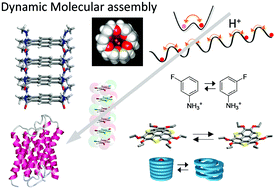Dynamics of proton, ion, molecule, and crystal lattice in functional molecular assemblies
Abstract
Dynamic molecular processes, such as short- or long-range proton (H+) and ion (M+) motions, and molecular rotations in electrical conducting and magnetic molecular assemblies enable the fabrication of electron–H+ (or M+) coupling systems, while crystal lattice dynamics and molecular conformation changes in hydrogen-bonded molecular crystals have been utilised in external stimuli responsive reversible gas-induced gate opening and molecular adsorption/desorption behavior. These dynamics of the polar structural units are responsible for the dielectric measurements. The H+ dynamics are formed from ferroelectrics and H+ conductors, while the dynamic M+ motions of Li+ and Na+ involve ionic conductors and coupling to the conduction electrons. In n-type organic semiconductors, the crystal lattices are modulated by replacing M+ cations, with cations such as Li+, Na+, K+, Rb+, and Cs+. The use of polar rotator or inversion structures such as alkyl amides, m-fluoroanilinium cations, and bowl-shaped trithiasumanene π-cores enables the formation of ferroelectric molecular assemblies. The host–guest molecular systems of ESIPT fluorescent chromic molecules showed interesting molecular sensing properties using various bases, where the dynamic transformation of the crystal lattice and the molecular conformational change were coupled to each other.



 Please wait while we load your content...
Please wait while we load your content...
